
The Simpsons: Road Rage is a 2001 video game based on the animated television series The Simpsons, and is part of a series of games based on the show. It was released for PlayStation 2, Xbox and GameCube. A Game Boy Advance version was released in 2003. The Simpsons: Road Rage was later added to the Backwards Compatibility program of the Xbox 360 for original Xbox games.

All Star Baseball 2003 is a baseball video game published by Acclaim Entertainment in 2002. The game features Derek Jeter on the cover.

Tech Romancer is a 1998 3D fighting arcade game by Capcom that draws heavily from the various subgenres of mecha anime. It was later ported to the Dreamcast console. The player controls a giant robot which is used to fight another robot in one-on-one combat. Studio Nue designed the robots in this game.

Zone of the Enders, officially abbreviated as Z.O.E., is a 2001 third-person shooter hack-and-slash video game that was developed and published by Konami for the Sony PlayStation 2. The game is based around mecha combat in outer space. Over the course of the game, the player obtains new weapons and has to protect towns from enemies.

The Sims Bustin' Out is a video game that was released in 2003/2004 for the PlayStation 2, Xbox, GameCube, Game Boy Advance and N-Gage. It is the second title in The Sims console series and the first The Sims title not released on Windows PC.
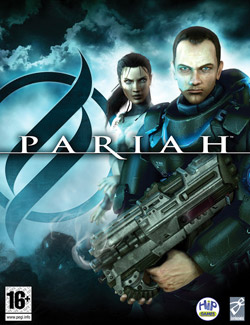
Pariah is a first-person shooter video game developed by Digital Extremes. It was released in May 2005 for Microsoft Windows and Xbox. It uses a modified version of the Unreal Engine and the Havok physics engine. A PlayStation 2 version was also in development but cancelled.
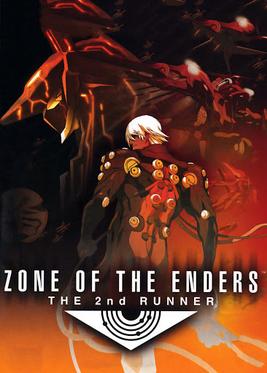
Zone of the Enders: The 2nd Runner, known in Japan as Anubis: Zone of the Enders, is a third-person shooter hack and slash video game that was developed and published by Konami for the PlayStation 2 in 2003. The sequel to Zone of the Enders is based around mecha combat with the player once again controlling the "Orbital Frame" Jehuty. Unlike its predecessor, the game is now centered on action elements with the player not needing to protect civilians in need and instead Jehuty contains more weaponry than in the previous game.
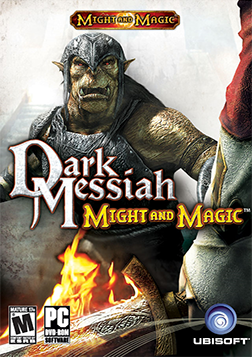
Dark Messiah of Might and Magic is a first-person action role-playing game developed by Arkane Studios. The player controls Sareth, the apprentice of the wizard Phenrig, after he is sent to the city of Stonehelm to accompany an expedition trying to retrieve a powerful artifact known as "The Skull of Shadows".

Armored Core 2 is a 2000 third-person shooter mecha video game developed by FromSoftware for the PlayStation 2. It is the fourth entry in the Armored Core series and an indirect sequel to Armored Core: Master of Arena. In North America, Armored Core 2 was a launch title for the PlayStation 2. A direct sequel, Armored Core 2: Another Age, was released in 2001 for the PlayStation 2.
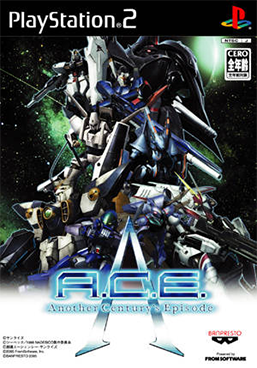
Another Century's Episode is a 2005 third-person shooter video game published by Banpresto in Japan for the PlayStation 2. The player controls a mech from one of nine different anime robot franchises to destroy opposing forces before they steal a prized energy source for devious purposes. The game is divided into several different missions, where players use their mech and arsenal of weapons to fulfill mission objectives, ranging from destroying enemy machines to protecting a specific target.
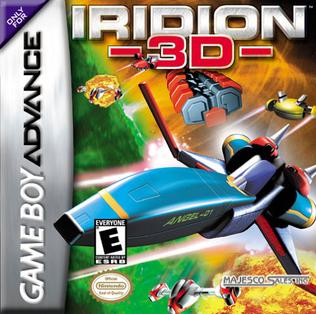
Iridion 3D is a quasi-3D rail shooter video game developed by Shin'en Multimedia. A launch title for the Game Boy Advance portable game console, it was released in North America on June 11, 2001 and in Europe on September 21. The player controls a single starship defending Earth from the alien Iridion. The game spans seven levels from Earth to the aliens' home planet, each following a linear path that culminate with a boss.
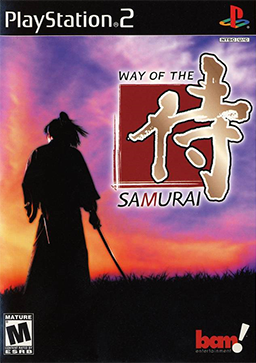
Way of the Samurai, known in Japan as Samurai (侍), is a PlayStation 2 action-adventure game developed by Acquire and released in 2002.
Zone of the Enders is a video game franchise created by Hideo Kojima and Konami that focused around combat in space with mecha called Orbital Frames. The original Zone of the Enders was released for the PlayStation 2 in March 2001. A sequel, Zone of the Enders: The 2nd Runner was released for the same system in 2003. In 2012, the two games were re-released in high-definition for the PlayStation 3 and Xbox 360 as Zone of the Enders HD Collection. Zone of the Enders: The Fist of Mars was released for Game Boy Advance in 2001. Zone of the Enders: 2167 Idolo, an original video animation, was released in March 2001. A twenty-six episode anime television series Z.O.E. Dolores, I ran from April to September 2001.

Top Gun: Combat Zones is a combat flight simulation game named after the 1986 film Top Gun. It was developed by British studio Digital Integration and published by Titus Interactive. It was originally released for the PlayStation 2 in 2001, followed by a GameCube version in 2002. Versions were also released for the Game Boy Advance and Microsoft Windows.
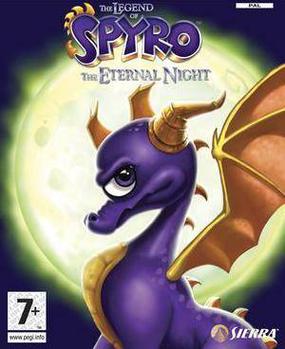
The Legend of Spyro: The Eternal Night is a 2007 action-adventure video game in the Spyro series. It is the second installment in The Legend of Spyro trilogy and the sequel to The Legend of Spyro: A New Beginning (2006). It was released for the Game Boy Advance, Nintendo DS, PlayStation 2, Wii, and mobile.

ATV: Quad Power Racing is a racing video game developed by Climax Development and published by Acclaim Entertainment under their Acclaim Sports banner for the PlayStation. A Game Boy Advance was released two years later and developed by Tantalus Interactive, and was released under the AKA Acclaim banner.

Ninety-Nine Nights II, stylized as N3II: Ninety-Nine Nights, is a role-playing video game with hack and slash game mechanics set in a high fantasy game universe, where a demon army is rising with one million troops. It is a sequel to Ninety-Nine Nights and was published by Konami. The game was announced at the TGS 2008 conference - a demo for the game was released on the Xbox Live marketplace on May 27, 2010, and the game release between June and September in North America, Japan, and European regions.

Adventure Pinball: Forgotten Island is a pinball video game released in 2001 by Electronic Arts for Microsoft Windows.

F1 2001 is a racing video game developed by Image Space Incorporated for the Microsoft Windows version and EA UK for the PlayStation 2 and Xbox version and published by EA Sports for Microsoft Windows, PlayStation 2 and Xbox. It is based on the 2001 Formula One season. A port for GameCube was planned, but cancelled for unknown reasons, and eventually released with minor changes as F1 2002. A Game Boy Color version was also cancelled during development.

Mr. Driller is a 1999 puzzle arcade game developed and published by Namco. Versions for the PlayStation, Dreamcast, Microsoft Windows, Game Boy Color, WonderSwan Color, mobile phones, and iOS were also released. Controlling Susumu Hori, the titular "Mr. Driller", the player must dig their way to the bottom of the screen by destroying colored blocks that litter the playfield. Blocks will be cleared if four or more are touching each other, which can be used to cause chain reactions. Susumu has a constantly-depleting oxygen meter that can be refilled by collecting air capsules found throughout stages.



















